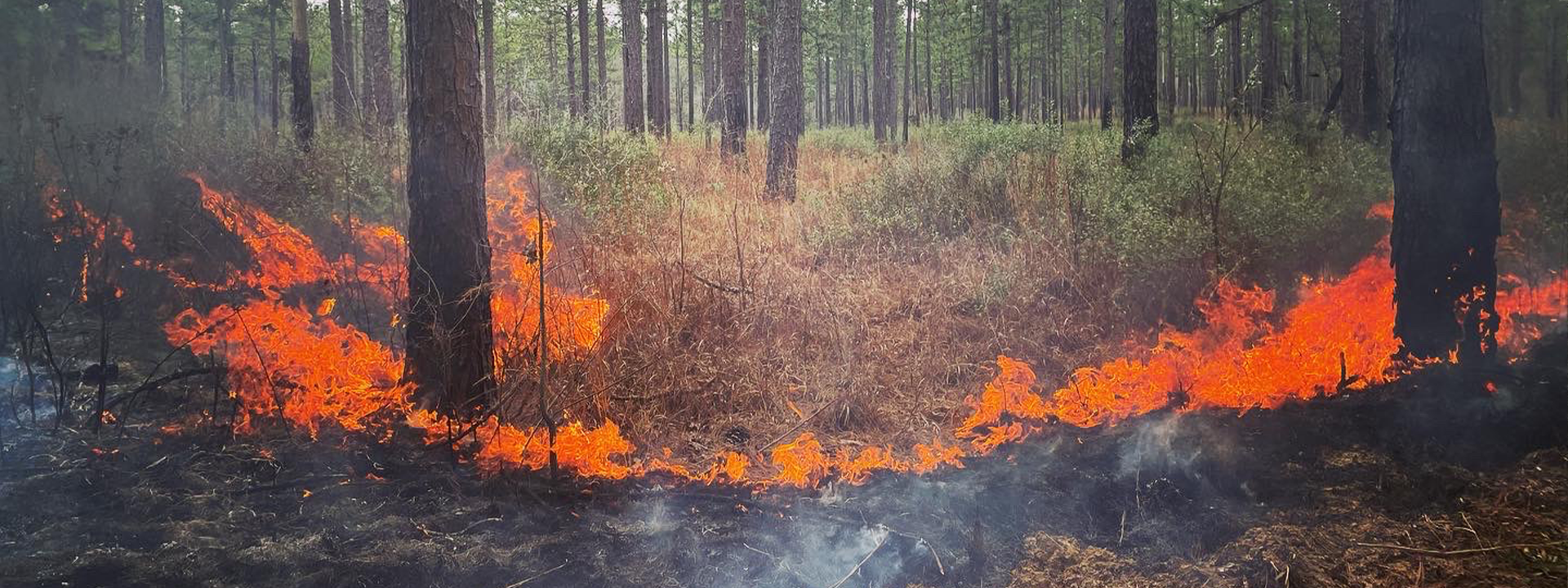
Findings
We are currently completing our final field season of data collection. So far, of the 43 male Bachman’s Sparrows that were banded in 2021, 14 have been identified again on the WMA in growing- and dormant-season burn units during 2022. We have collected more than 250 vegetation surveys during the breeding season pre-burn and more than 100 vegetation surveys post-burn with an additional 2022 vegetation points anticipated.
Our preliminary analyses of winter vegetation and abundance data suggest growing-season burns at Marion County WMA resulted in beneficial structural and compositional components (reduced hardwood midstory, shrubs less than three feet in height, and increased amounts of herbaceous understory and bare ground) related to wintering habitat characteristics selected by Bachman’s Sparrows less than a year after burning. Dormant-season burn treatments provided similar benefits but were often less pronounced than data collected from units treated with growing-season burns, which might result in reduced mobility and escape refugia for wintering Bachman’s Sparrows in areas treated with prescribed fire during the dormant season.
Furthermore, we detected individuals in growing-season burn units where they had not been found before fire treatments. Banded individuals returning to growing-season burn units during the 2022 breeding season often reoccurred in the same territories used in the 2021 breeding season, with more than 80% exhibiting territorial behavior within 100 yards of 2021 territories or banding sites.
